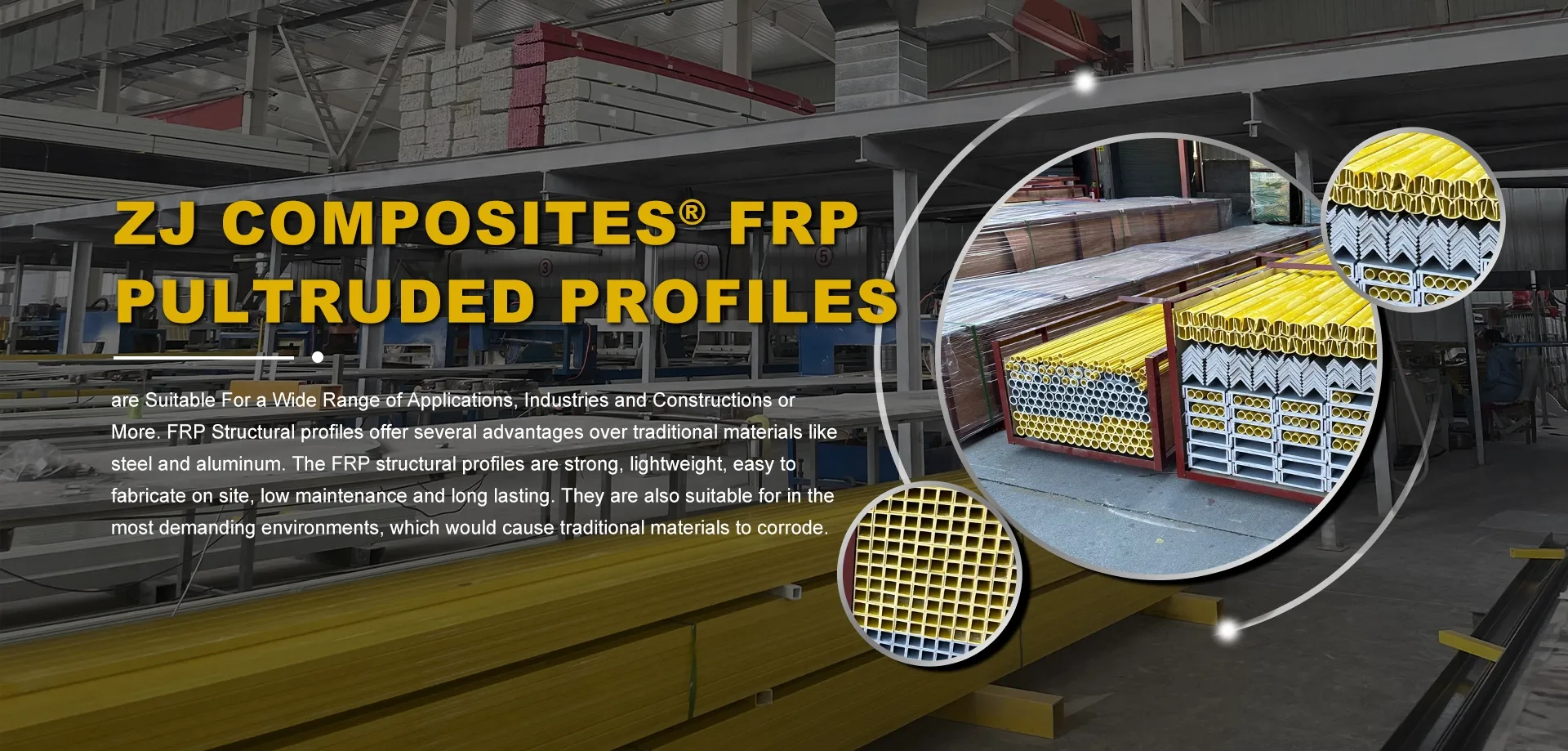loading...
- No. 9, Xingyuan South Street, Dongwaihuan Road, Zaoqiang County, Hengshui, Hebei, China
- admin@zjcomposites.com
- +86 15097380338
- Welcome to visit our website!
Exploring the Innovative Applications of Grating Fiber Reinforced Polymer in Modern Engineering Solutions
Understanding Grating FRP A Deep Dive into Fiber Reinforced Polymer Grating
Fiber Reinforced Polymer (FRP) grating is an innovative and durable solution widely used in various industries, including construction, marine, and chemical processing. As industries increasingly focus on sustainable materials and improved safety features, FRP grating stands out due to its unique properties and advantages.
What is FRP Grating?
FRP grating is a composite material made from a polymer matrix reinforced with fibers, typically fiberglass. The manufacturing process involves combining resin with glass fibers to create a robust structural component that is both lightweight and strong. The resulting product is often molded into specific shapes, which can include square or rectangular openings, depending on the application requirements.
Advantages of FRP Grating
One of the most significant benefits of FRP grating is its corrosion resistance. Unlike traditional materials like steel or aluminum, FRP does not corrode when exposed to harsh chemicals or marine environments. This property makes it ideal for applications in wastewater treatment facilities, chemical plants, and offshore platforms, where exposure to aggressive substances can lead to structural failure in metal materials.
Another notable feature of FRP grating is its lightweight nature, which facilitates easier installation and reduces transportation costs. Because it is significantly lighter than steel or aluminum, FRP grating can often be installed with less heavy machinery, making it a preferred choice for many projects.
Safety is another compelling advantage. FRP grating is textured, providing excellent slip resistance, which is critical in areas where liquid spills may occur or where safety regulations need to be stringent. Some FRP grating products are even designed to be flame-retardant, enhancing fire safety in environments that may be susceptible to flames.
grating frp

Applications of FRP Grating
The versatility of FRP grating means it is utilized across a broad spectrum of industries. In the construction industry, it is frequently employed as walkways, stair treads, and industrial flooring, providing a safe and durable surface for workers. In the marine sector, FRP grating is used on docks, piers, and boat decks, where its resistance to saltwater and UV radiation is invaluable.
Moreover, FRP grating has found its way into the chemical industry, where it is crucial for supporting piping systems and as platforms for chemical storage. Its non-conductive properties also make it ideal for electrical applications, preventing any risk of electrostatic discharge in hazardous environments.
Environmental Impact and Sustainability
As sustainability becomes a growing concern for industries worldwide, FRP grating stands out due to its long lifespan and recyclability. Its durability means that it does not need frequent replacement, reducing waste over time. Additionally, many manufacturers are now using recycled materials in the production of FRP, further enhancing its eco-friendly profile.
Conclusion
In conclusion, grating FRP represents a significant advancement in composite technology that meets the needs of modern industries. Its unique combination of corrosion resistance, lightweight properties, safety features, and versatility make it an excellent choice for various applications. As the demand for sustainable and durable materials continues to rise, FRP grating is poised to become even more prevalent in the market. Embracing such innovative solutions not only benefits industries economically but also plays a crucial role in fostering a safer and more sustainable environment for future generations.
-
The Rise of FRP Profiles: Strong, Lightweight, and Built to LastNewsJul.14,2025
-
SMC Panel Tanks: A Modern Water Storage Solution for All EnvironmentsNewsJul.14,2025
-
GRP Grating: A Modern Solution for Safe and Durable Access SystemsNewsJul.14,2025
-
Galvanized Steel Water Tanks: Durable, Reliable, and Ready for UseNewsJul.14,2025
-
FRP Mini Mesh Grating: The Safer, Smarter Flooring SolutionNewsJul.14,2025
-
Exploring FRP Vessels: Durable Solutions for Modern Fluid HandlingNewsJul.14,2025
-
GRP Structures: The Future of Lightweight, High-Performance EngineeringNewsJun.20,2025
